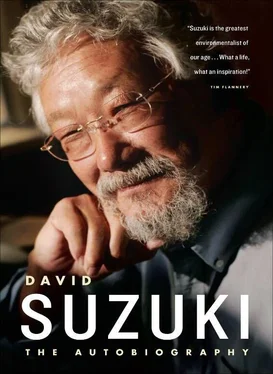Can we assume all of the assessment and decision making would take place in seconds as it was passed up the chain of command and that finally someone somehow would enter, knock, blow a whistle, or do something else to wake the president? Can we assume the president would be fully awake instantly, able to assess the information lucidly and with care, ponder the consequences of not acting or responding, and not be distracted by thoughts of the country, his loved ones, or the stock market? Would he become sick or, as we saw him do in Michael Moore's documentary Fahrenheit 9/11 after Bush received the news that two jetliners had crashed into the Twin Towers in New York in 2001—sit there for several minutes with a totally blank look? I know I would.
With a response-time window of minutes, even with the most efficient system the pressures would be too great for any human being to respond rationally. So if one believes in the technology, it has to be programmed to assess what is happening as each second ticks by, measure the effective time for response, and then decide when that critical moment is reached and order a response without interference by fallible humans.
The technology required to detect and respond to any possible threat — space satellites with sophisticated detectors and systems to relay information to ground stations, underground command centers, missiles in silos, and so on — is enormously complex. I do not believe for a minute that such a vast array of components will function perfectly from the time it is in place (my smoke detector didn't work the one time it was needed), but the only time we will know will be the first occasion it is put to the test. To function properly, the entire system will depend on the speed and accuracy of the supercomputers that are at the heart of the defense program. The computer program required to analyze all of the data will be more complex than any software ever designed, because every possible contingency has to be anticipated and programmed for without countermanding or interfering with different sets of instructions.
We know that any new program has numerous “bugs,” and the only way to eliminate them is through thousands of people beginning to use it and finding them. Can a program be designed to respond to an attack without being tested by the real thing? It will have to be perfect the first time, something scientists not working for the military or receiving grants from the military tell us is virtually impossible. Only a scientifically literate president can even begin to truly assess the technical aspects of the proposed system.
SINCE I WROTE Metamorphosis , I have abandoned the doing of genetics, which had consumed me for a quarter of a century. In the 1970s, when geneticists began to learn to isolate and manipulate DNA in very sophisticated ways, it was immediately obvious there were enormous social, economic, and ecological implications. For decades writers, philosophers, and geneticists had been speculating about genetic engineering and discussing the potential ramifications of such powers. I never dreamed that within my lifetime, not only would the entire dictionary of sixty-four three-letter DNA words be deciphered, but we would also be able to purify, read, and synthesize specific sequences of DNA and insert them into virtually any organism at will. The day of human-designed organisms was at hand.
I knew there would be tremendous repercussions. Having belatedly recognized the dangers that our inventiveness posed from the battles over the insecticide DDT and then CFCs, I felt genetic engineering would encounter the same problems — our manipulative powers were great, but our knowledge of how the world works is so limited that we would not be able to anticipate all of the consequences in the real world. In my view, we had to be very cautious.
But there was tremendous pressure in my lab to begin working with the new technologies of DNA manipulation, because the techniques were so powerful that they had become molecular equivalents of a microscope, an indispensable tool for virtually every kind of genetic study. However, if my lab began to exploit these new technologies, I would have a strong vested interest in defending their continued use and ultimately application. Wouldn't this make me just like a scientist working for the tobacco industry, someone with a perspective and motivation that bias the way he or she carries out tests, interprets results, and draws conclusions? I had achieved far more in science than I ever dreamed. I hadn't set out to win honors or prizes or make a fortune; I only ever wanted the acknowledgment of my scientific cleverness by my peers.
As a result of the grotesque misapplication of a genetic rationale during the early part of the twentieth century in the eugenics movement, and in the Japanese Canadian evacuation, and then in the Holocaust, I knew a debate about genetic engineering had to be engaged and I wanted to participate in it with credibility. So I began to write a series of disclaimers, stating my intent not to become involved in such research, even though it was perhaps one of the most exciting moments in the history of genetics. That made it all the more imperative that some people with a background in genetics be able to enter the discussion without a stake in the technology.
Nevertheless, I continue to take vicarious delight in the enormous technical dexterity of today's molecular geneticist and revel in seeing answers to biological questions I never thought would be resolved in my lifetime. I watched my daughter carrying out experiments in undergraduate labs that were unthinkable when I graduated with a PhD. It is no wonder geneticists are exhilarated — indeed, intoxicated with excitement. But the rush to exploit this new area as biotechnology has me deeply disturbed.
I am equally distressed at the rush of my peers and colleagues in genetics to tout the potential benefits of this powerful technology with virtually no consideration of the hazards. Like scientists employed by the tobacco, fossil fuel, pharmaceutical, and forest industries, geneticists who set up companies, serve on boards, receive grants, or carry out experiments using the new techniques have a commitment to the technology that biases their pronouncements. As issues of cloning, stem cells, and release of genetically engineered organisms in the wild continue to crop up, there is a dearth of scientists trained in genetics who don't have a stake in the technology. Those few of us who are out there are often dismissed as has-beens who don't know what's going on. In their exuberance about the astonishing advances being made, scientists have expunged the history of their field and speak only of the enormous potential benefits of their work while dismissing the equally plausible hazards.
I have long agonized over the misapplication of genetics in the past, from the ludicrous claims of eugenics to prohibitions on interracial marriage, restrictions on immigration of ethnic groups, claims of racial inferiority, the supposed racial affinity of Japanese Canadians, and the Holocaust. Because of that, I wrote a series of columns that led to my eventual withdrawal from research to maintain my credibility in the discussions about the implications. In Science Forum in 1977, I wrote:
For young scientists who are under enormous pressure to publish to secure a faculty position, tenure or promotion, and for established scientists with “Nobelitis”, the siren's call of recombinant DNA is irresistible. . In my own laboratory, there is now considerable pressure to clone Drosophila DNA sequences in E. coli . . My students and postdocs take experiments and techniques for granted that were undreamed of five or ten years ago. We feel that we're on the verge of really understanding the arrangement, structure and regulation of genes in chromosomes. In this climate of enthusiasm and excitement, scientists are finding the debate over regulation and longterm implications of recombinant DNA a frustrating roadblock to getting on with the research.
Читать дальше


![David Jagusson - Devot & Anal [Hardcore BDSM]](/books/485905/david-jagusson-devot-anal-hardcore-bdsm-thumb.webp)









